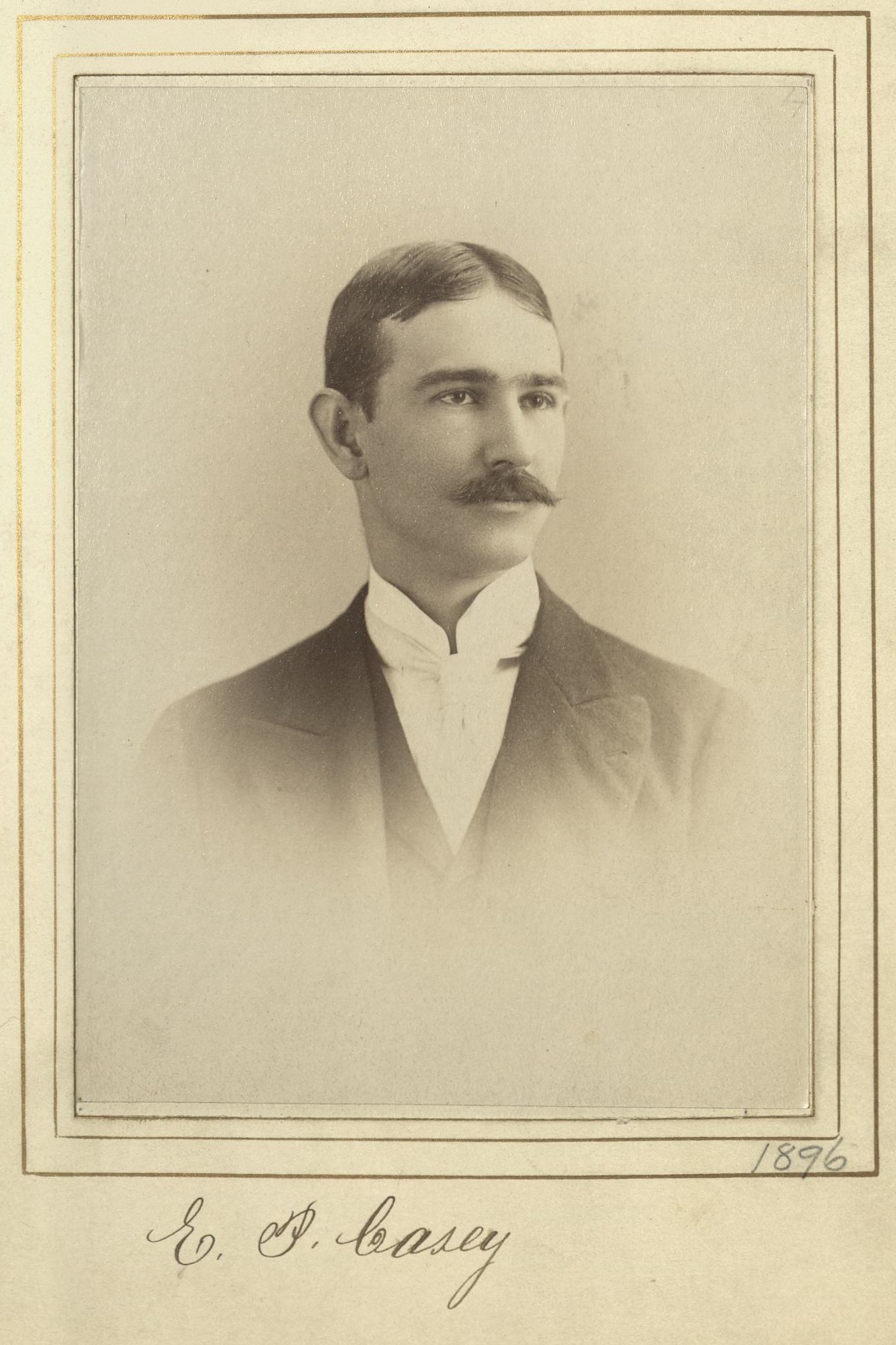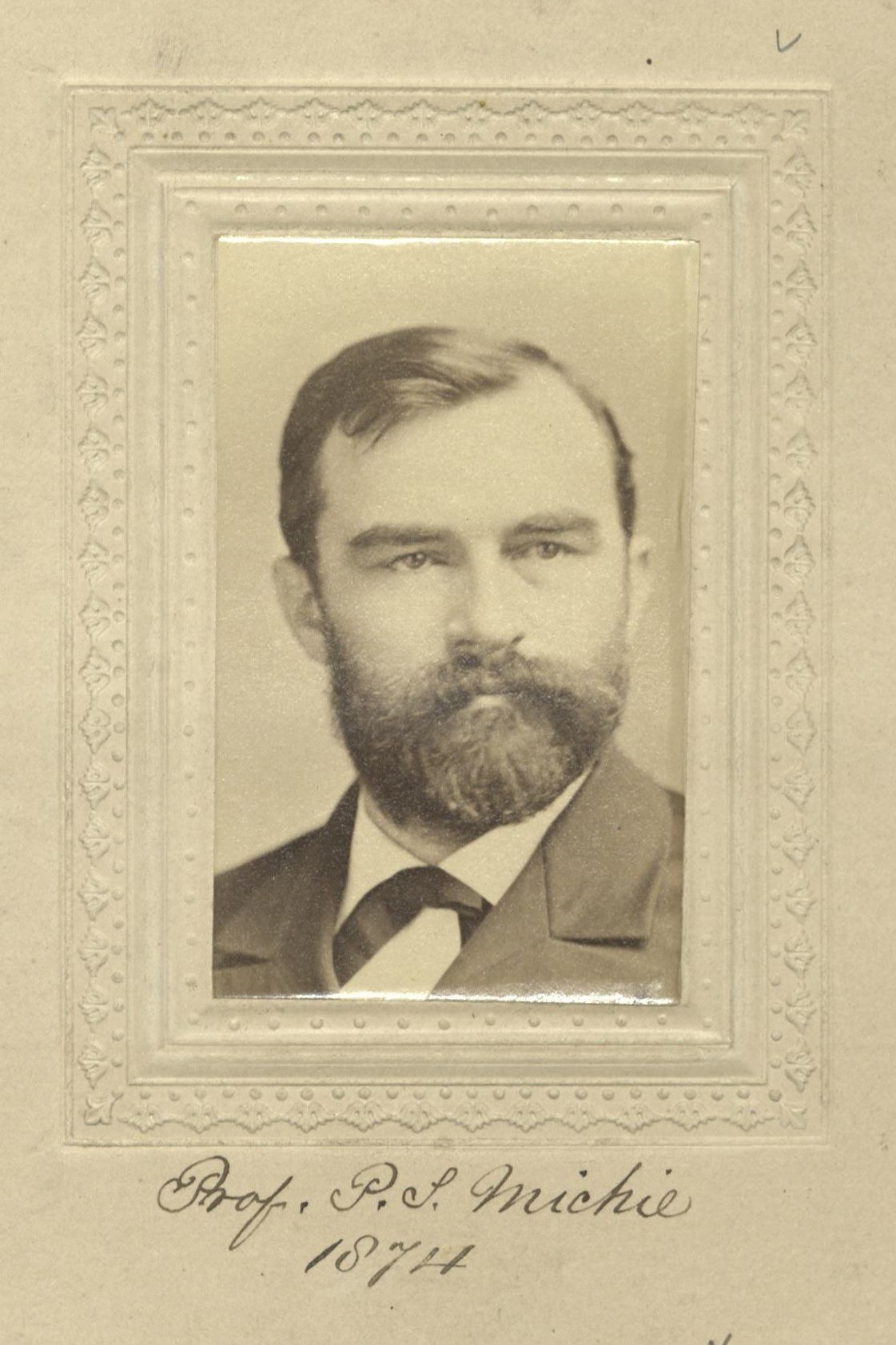Member Directory,
1847 - 1922
Thomas Lincoln Casey
U.S. Army
Centurion, 1888–1896
William M. Evarts and Peter S. Michie
Sackets Harbor, New York
Washington, District of Columbia
Age fifty-six
North Kingstown, Rhode Island

Archivist’s Notes
Father of Edward P. Casey and Thomas Lincoln Casey; brother-in-law of John F. Weir, Julian Alden Weir, and Robert F. Weir
Century Memorial
Gen. Thomas L. Casey came of a line of soldiers, and was cradled in the army. Those of us whose memory goes back to the storm-clouded days of the Civil War, with their bloody record of battles, defeats and victories, of hope alternating with despair, will recall the confidence and pride with which the loyal people of the North regarded the little corps of Regulars commanded by his father, Gen. Silas Casey, who, upon every field in which they were engaged, gave an example of steadiness, courage and devotion, to the whole army, and made them and their chief, household words throughout the land.
The son was of the same material as the father. Graduating first in his class at West Point in 1852, he served through the whole of his long and honorable career in the Corps of Engineers, to which by virtue of his standing he was assigned, and ended as its chief, with the rank of Brigadier General.
In the course of his service he was entrusted with more varied and intricate engineering work, and that of the highest order, than has fallen to the lot of most engineering officers in the American Army. It covered a wide area of the country, from Delaware Bay on the Atlantic to Washington Territory on the Pacific, where he constructed the first land communication between the Columbia River and Puget Sound. He was for five years Instructor and Professor of Engineering at West Point, and afterwards, at the early age of thirty, superintending engineer of five important permanent fortifications upon the coast of Maine, of the greatest importance and value in the critical period of the Civil War, where his ability and skill in the most scientific and original work attracted the attention of the Government; and, as a result, he was placed in charge at the National Capital of the construction and maintenance of the buildings for the State, War and Navy Departments, the Washington Aqueduct, the offices of Public Buildings and Grounds, and the completion of the Washington Monument, a work involving engineering problems of the greatest difficulty and magnitude. The successful accomplishment of such work is a monument to his skill, his judgment and his energy, and gave him a world-wide reputation.
At the time of his death he was in charge of the construction of the building for the Library of Congress, one of the largest and most beautiful of the monumental buildings of the country. It had already become celebrated as a success in management and fitness for its great purpose, as well as for its architectural and artistic merits, quite beyond most other government buildings, when he, who was looking forward to its completion as a fitting crown of a successful career, received his final summons.
He was a model officer, a man of whom his country had reason to be proud; conscientious and able, far-sighted and of conspicuous integrity. His blameless life and distinguished services have added new lustre to an honored name.
Henry E. Howland
1897 Century Association Yearbook
Related Members
Member Directory Home-
 Edward P. CaseyArchitectCenturion, 1896–1940
Edward P. CaseyArchitectCenturion, 1896–1940 -
 Thomas Lincoln CaseyColonel, U.S. Army/EntomologistCenturion, 1921–1925
Thomas Lincoln CaseyColonel, U.S. Army/EntomologistCenturion, 1921–1925 -
 William M. EvartsLawyer/Public ServantCenturion, 1848–1901
William M. EvartsLawyer/Public ServantCenturion, 1848–1901 -
 Peter S. MichieArmy Officer/Professor, West PointCenturion, 1874–1901
Peter S. MichieArmy Officer/Professor, West PointCenturion, 1874–1901 -
 John F. WeirArtist/Dean, Yale School of ArtCenturion, 1864–1926
John F. WeirArtist/Dean, Yale School of ArtCenturion, 1864–1926 -
 Julian Alden WeirArtistCenturion, 1881–1919
Julian Alden WeirArtistCenturion, 1881–1919 -
 Robert F. WeirPhysicianCenturion, 1884–1921
Robert F. WeirPhysicianCenturion, 1884–1921







